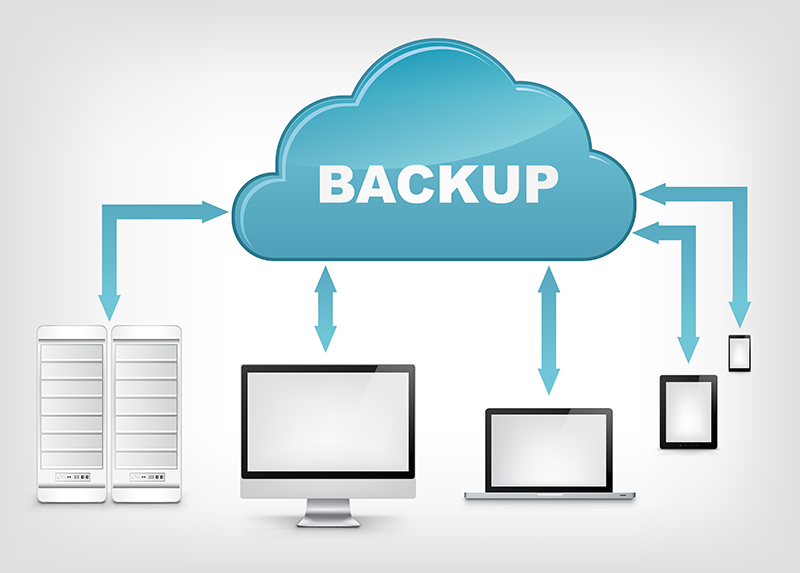Who Pays Redundancy Money? An In-depth Overview for Employers and Employees
Who Pays Redundancy Money? An In-depth Overview for Employers and Employees
Blog Article
Discovering the Operational Dynamics of Business Redundancy and Its Long-Term Sustainability

Redundancy Methods for Business Continuity
In order to ensure undisturbed procedures, companies need to implement efficient redundancy approaches for company connection. Redundancy in this context refers to the duplication of important components or features within a system to mitigate the effect of possible failings. By integrating redundancy methods, companies can improve their durability against disturbances brought on by different aspects such as natural calamities, equipment failings, or cyber-attacks.
One common redundancy technique is the application of backup systems and information storage services. This includes developing matches of vital data and systems that can be triggered in instance of a key system failing. In addition, companies can develop repetitive interaction networks and source of power to preserve connection and procedures during unanticipated occasions.
Moreover, cross-training workers to do multiple duties within the firm can function as an important redundancy strategy. This guarantees that vital tasks can still be performed even if essential workers are inaccessible as a result of health problem or various other factors. Generally, efficient redundancy methods are necessary for services to maintain functional continuity and reduce the impact of prospective disruptions.
Impact of Redundancy on Business Resilience
Offered the essential duty redundancy methods play in making sure company continuity, exploring the impact of redundancy on organizational strength comes to be important for understanding the alternative operational dynamics of a firm. Organizational strength refers to an entity's capacity to adapt to disturbances, recover from setbacks, and change when required while keeping core functions. Redundancy, when purposefully executed, can dramatically add to boosting an organization's durability in the face of unexpected difficulties. By having back-up systems, personnel, or procedures in position, business can better endure shocks and continue operations with marginal interruption.
Additionally, redundancy can bolster worker spirits and self-confidence, knowing that there are contingency plans in area to resolve unforeseen situations. This complacency can result in boosted efficiency and an extra favorable workplace. In addition, redundancy can foster development and imagination within an organization as employees really feel empowered to take calculated threats, recognizing that there is a security internet to support them in situation of failure. In general, the impact of redundancy on business durability is profound, forming the long-lasting sustainability and success of a business.
Stabilizing Effectiveness and Flexibility in Redundancy
Accomplishing an unified balance between operational effectiveness and adaptive adaptability is a critical difficulty in the strategic release of redundancy within companies. Too much flexibility without a strong operational foundation can result in ineffectiveness and variance.
To stabilize efficiency and flexibility in redundancy preparation, organizations need to carefully evaluate their functional demands, market characteristics, and strategic goals. Executing lean techniques can boost performance by getting rid of and enhancing processes waste, while promoting a culture of versatility and continuous improvement can increase flexibility. Additionally, spending in cross-training programs and durable interaction channels can aid grow a functional labor force with the ability of handling varied tasks during periods of shift. Eventually, discovering the ideal equilibrium in between effectiveness and flexibility is crucial for developing a lasting and durable organization in the face of uncertainty.
Long-Term Sustainability Through Redundancy Preparation
To ensure enduring practicality and security, organizations must tactically straighten their redundancy planning with lasting sustainability goals, consequently harmonizing functional effectiveness with flexible versatility. Lasting sustainability with redundancy preparation involves greater than simply short-term cost-cutting procedures. It calls for an extensive tactical technique that anticipates future difficulties and possibilities. Business need to see redundancy not as a responsive option to immediate issues yet as a positive approach for long-lasting success. By integrating redundancy planning with sustainability goals, companies can produce a resistant framework that can endure numerous market fluctuations and interior adjustments.

Positive Procedures for Sustainable Company Procedures
How can business proactively boost their functional sustainability for long-lasting success? Implementing proactive steps is essential for companies intending to ensure sustainable procedures. One vital technique is to spend in technology and development to improve processes, minimize waste, and stay competitive out there. Taking on sustainable methods such as lowering power usage, reducing carbon impact, and maximizing source application can not only benefit the environment but also cause cost savings over time.
Furthermore, fostering a society of continuous improvement and knowing within the company can improve adaptability to transforming market conditions and customer demands. Urging employee participation in decision-making procedures and providing opportunities for specialist development can increase morale, performance, and overall performance. Developing clear objectives, monitoring key efficiency indicators, and frequently assessing progress are vital parts of proactive sustainability administration.
Collaborating with vendors, customers, and various other stakeholders to advertise sustainable methods throughout the supply chain can develop a causal sequence of positive influence - redundancy pay if company goes bust. By taking aggressive steps in the direction of operational sustainability, business can construct durability, drive innovation, and protect their long-lasting success in an ever-evolving service More Bonuses landscape
Conclusion

In the realm of organizational monitoring, the tactical implementation of company redundancy stands as a crucial yet elaborate method that demands a delicate equilibrium between functional efficiency and long-lasting viability. By studying the operational characteristics that underpin company redundancy and evaluating its broader implications for business strength and versatility, a nuanced understanding of how redundancy techniques can shape the future trajectory of a company begins to unravel.Provided the important function redundancy methods play in guaranteeing business connection, exploring the influence of redundancy on business durability ends up being necessary for understanding the all natural operational characteristics of a company. On the whole, the effect of redundancy on organizational strength is profound, forming the long-lasting sustainability and success of a business.
In verdict, recognizing the functional dynamics of business redundancy is critical you could try these out for guaranteeing long-term sustainability.
Report this page